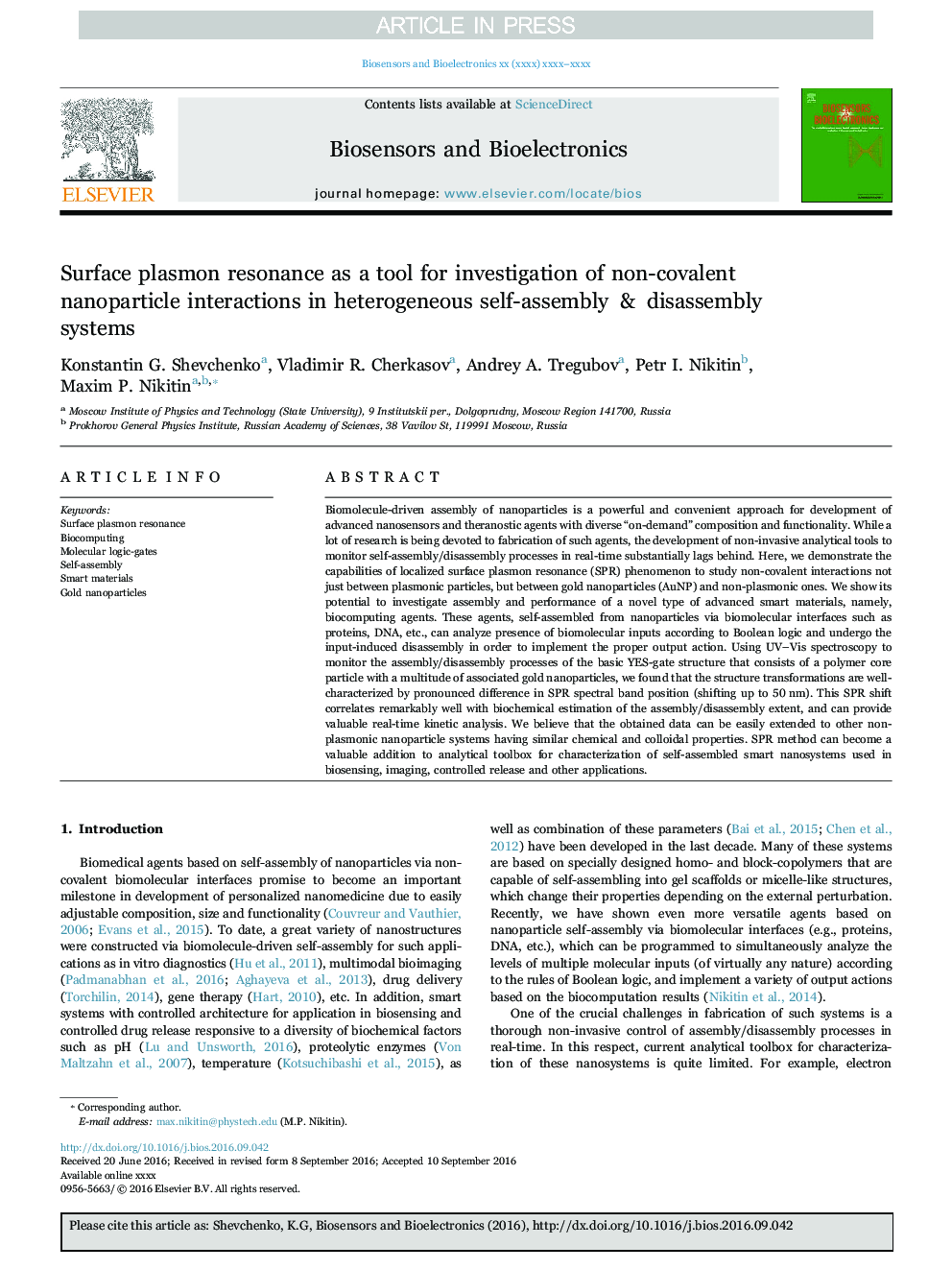| کد مقاله | کد نشریه | سال انتشار | مقاله انگلیسی | نسخه تمام متن |
|---|---|---|---|---|
| 5031389 | 1470943 | 2017 | 6 صفحه PDF | دانلود رایگان |
عنوان انگلیسی مقاله ISI
Surface plasmon resonance as a tool for investigation of non-covalent nanoparticle interactions in heterogeneous self-assembly & disassembly systems
ترجمه فارسی عنوان
رزونانس پلاسما سطحی به عنوان ابزاری برای بررسی اثر متقابل نانوذرات غیر کووالانتی در سامانه های خودمجموعه و جداسازی ناهمگن
دانلود مقاله + سفارش ترجمه
دانلود مقاله ISI انگلیسی
رایگان برای ایرانیان
کلمات کلیدی
رزونانس پلاسما سطحی، بیومواد، منطق گیتس مولکولی، خودمجموعه، مواد هوشمند، نانوذرات طلا،
موضوعات مرتبط
مهندسی و علوم پایه
شیمی
شیمی آنالیزی یا شیمی تجزیه
چکیده انگلیسی
Biomolecule-driven assembly of nanoparticles is a powerful and convenient approach for development of advanced nanosensors and theranostic agents with diverse “on-demand” composition and functionality. While a lot of research is being devoted to fabrication of such agents, the development of non-invasive analytical tools to monitor self-assembly/disassembly processes in real-time substantially lags behind. Here, we demonstrate the capabilities of localized surface plasmon resonance (SPR) phenomenon to study non-covalent interactions not just between plasmonic particles, but between gold nanoparticles (AuNP) and non-plasmonic ones. We show its potential to investigate assembly and performance of a novel type of advanced smart materials, namely, biocomputing agents. These agents, self-assembled from nanoparticles via biomolecular interfaces such as proteins, DNA, etc., can analyze presence of biomolecular inputs according to Boolean logic and undergo the input-induced disassembly in order to implement the proper output action. Using UV-Vis spectroscopy to monitor the assembly/disassembly processes of the basic YES-gate structure that consists of a polymer core particle with a multitude of associated gold nanoparticles, we found that the structure transformations are well-characterized by pronounced difference in SPR spectral band position (shifting up to 50Â nm). This SPR shift correlates remarkably well with biochemical estimation of the assembly/disassembly extent, and can provide valuable real-time kinetic analysis. We believe that the obtained data can be easily extended to other non-plasmonic nanoparticle systems having similar chemical and colloidal properties. SPR method can become a valuable addition to analytical toolbox for characterization of self-assembled smart nanosystems used in biosensing, imaging, controlled release and other applications.
ناشر
Database: Elsevier - ScienceDirect (ساینس دایرکت)
Journal: Biosensors and Bioelectronics - Volume 88, 15 February 2017, Pages 3-8
Journal: Biosensors and Bioelectronics - Volume 88, 15 February 2017, Pages 3-8
نویسندگان
Konstantin G. Shevchenko, Vladimir R. Cherkasov, Andrey A. Tregubov, Petr I. Nikitin, Maxim P. Nikitin,
